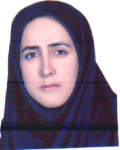| نویسندگان | M. Sarabadan, H. Bashiri, S. M. Mousavi |
|---|---|
| نشریه | KOREAN J CHEM ENG |
| شماره صفحات | 1575-1586 |
| شماره مجلد | 36 |
| ضریب تاثیر (IF) | 2.476 |
| نوع مقاله | Full Paper |
| تاریخ انتشار | 2019-09-20 |
| رتبه نشریه | علمی - پژوهشی |
| نوع نشریه | الکترونیکی |
| کشور محل چاپ | کرهٔ جنوبی |
| نمایه نشریه | SCOPUS ,JCR |
چکیده مقاله
Natural zeolite as a low cost clay was tested for removal of crystal violet known as a noxious dye. Five characterization techniques were used for this study. Optimizing and modeling of adsorption were performed at minimum time by an applicable technique named as response surface methodology (RSM). Three effective variables (pH, temperature (T) and adsorbate-to-adsorbent ratio (a/A)) were monitored to obtain the dye removal efficiencies. The maximum removal of dye was obtained at pH=10, T=25 oC and a/A=0.1 g/g. For natural zeolite, the Fractal-Langmuir model was selected as an appropriate model for kinetic studies and the Freundlich isotherm was the best isotherm for equilibrium studies. Thermodynamic investigations showed that the adsorption of dye on natural zeolite is endothermic process and a spontaneous reaction. The maximum dye adsorption capacity of natural zeolite and Merck activated carbon on the surface of each adsorbent was obtained at 177.75 and 84.11mg/g, respectively. In comparison with the maximum adsorption capacity of activated carbon obtained from Merck Company, we can conclude that natural zeolite possesses a higher adsorption capacity. These results reveal that, natural zeolite is an excellent and affordable adsorbent for removal of crystal violet from wastewater as compared to activated carbon.
